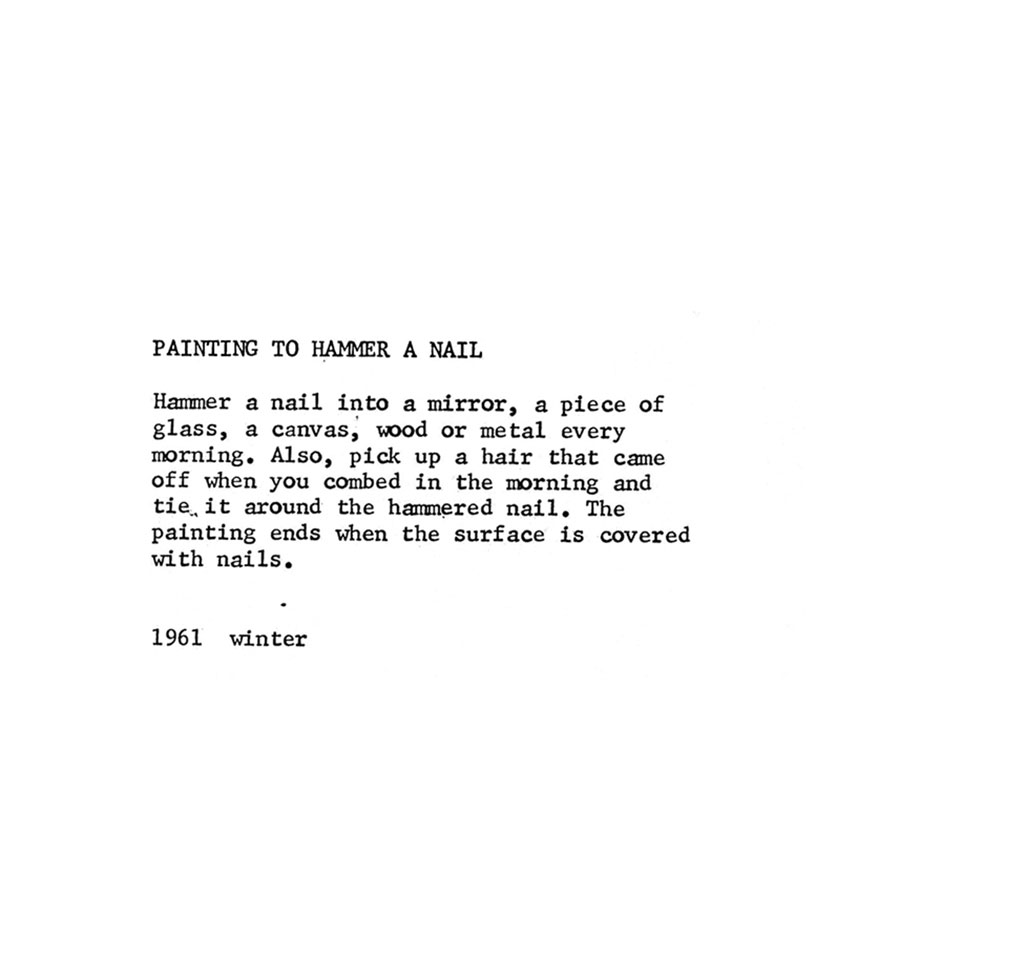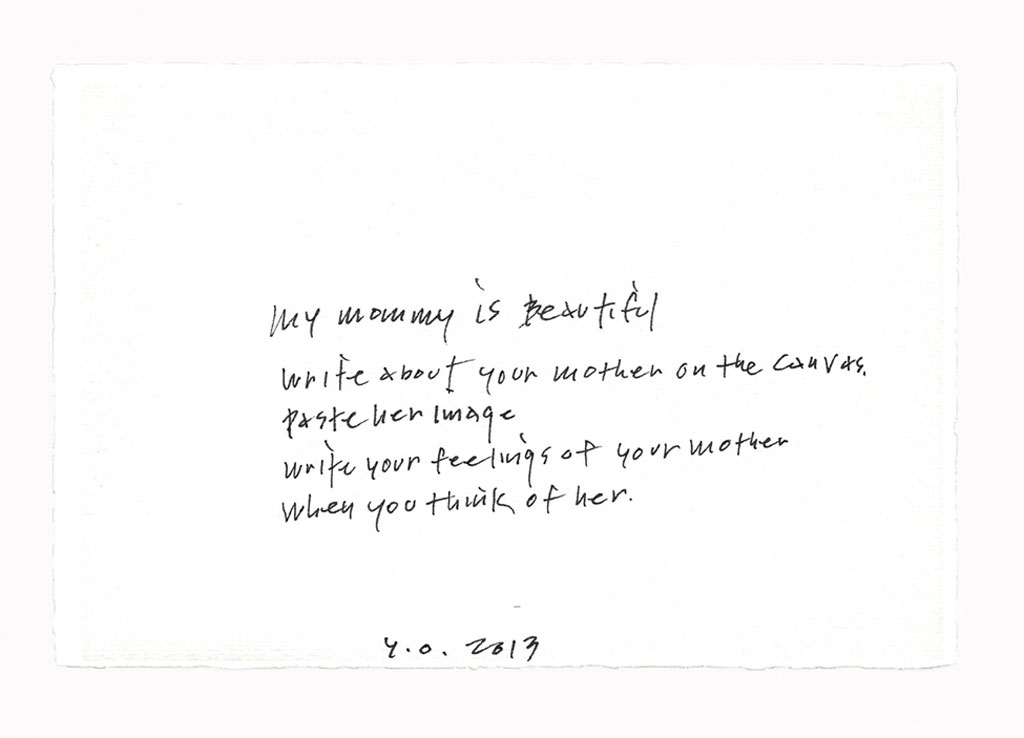ART-PRESENTATION:Yoko Ono-The Learning Garden of Freedom
 In 1961, Yoko Ono began working in Conceptual and Participatory art, avant-garde music, experimental film, and performance. Her work aroused the interest of important figures like Marcel Duchamp, and George Maciunas. She has done collaborative projects with artists like Nam June Paik and the Fluxus group. In 1964, she published “Grapefruit”, her mythical book of instructions.
In 1961, Yoko Ono began working in Conceptual and Participatory art, avant-garde music, experimental film, and performance. Her work aroused the interest of important figures like Marcel Duchamp, and George Maciunas. She has done collaborative projects with artists like Nam June Paik and the Fluxus group. In 1964, she published “Grapefruit”, her mythical book of instructions.
By Efi Michalarou
Photo: Serralves Museum Archive

Yoko Ono played a pioneering role in the international development of conceptualism, performance art and experimental film. Ideas, more than materials, are the main component of her oeuvre. Many of these ideas are poetic, absurd and utopian, while others are specific and practical. Some are transformed into objects, while others remain immaterial. Her works often reflect her sense of humour, as well as her distinctive socio-critical stance. “The Learning Garden of Freedom” is a major retrospective exhibition of Yoko Ono’s work, is the first exhibition ever held in Portugal entirely dedicated to her oeuvre. During her career spanning more than 60 years, Yoko Ono has remained faithful to her art and convictions, without ever abandoning urgent aesthetic, political and social issues. The exhibition covers Yoko Ono’s work, through objects, works on paper, installations, performances, audio recordings and films, in addition to rarely exhibited archive materials and presents a comprehensive overview of the multifaceted production by this pioneering conceptual artist and performance artist. In the early years of her career Yoko Ono lived between New York, Tokyo and London and this exhibition also extend across different locations: the Serralves Museum and Park and the streets of Porto. The starting point for many of the works on display is her Instructions: oral or written guidelines for spectators, which offer a set of suggestions and give the audience a much more active role than normally occurs in the world of art. Along the way, Yoko Ono encourages the spectator to experience, touch and move the objects in her works, and even challenges them to participate – either physically or mentally. Many of the artist’s works shown in the exhibition are conceived as instructions, many taken from her 1964 book “Grapefruit” in which she assembled various written instructions, that she considers to be fundamental in her creative process. The book divides the instructions into different sections: music, painting, event, poetry and objects. The artist uses them to involve other people in the construction of each work, thereby generating totally different perspectives. The texts presented throughout the exhibition also contemplate the possibility that some works may only be constructed mentally or not be implemented at all, in anticipation of conceptualism. Performance Instructions also mark Yoko Ono’s presence in Serralves, in line with a paradoxical poetic that she calls “sensory experiences”. In “Cut piece”, a performer is seated on stage, immobile and perfectly concentrated, while members of the audience, one at a time, cut a small piece from her clothes, to take home with them. In “Bag Piece” (1964) the spectator is invited to enter a bag, designed either for one or two people, and then undress and re-dress. For Yoko Ono, being in a bag means showing the other side, which has nothing to do with ethnicity, sex or age. Inside a bag, the BEING is simply a soul Similar to her paintings or performances, Yoko Ono also built a set of objects that could be called “Instruction works”.
Whereas in the 1960s these objects were made of acrylic, many were later replicated in bronze, contrasting the lightness and transparency of acrylic with the opacity of bronze. Sometimes she used three-dimensional objects to write statements or mark out positions related to her philosophy. Language is a structuring element of her creative process. Throughout the exhibition we find works based on word(s), directly written on the wall, on screens or on large supports installed in Serralves Park. We also find texts in the form of a table, on small metal plates attached to the works, in this case to objects made of acrylic. The artist often deliberately chooses words that can have different meanings or that can be read as an imperative verb – breathe, cut, imagine. Music and film also play a major role in the exhibition, revealing their importance in Yoko Ono’s artistic development. Ono’s first films, made in the 1960s, reflect her way of demonstrating, in a more effective and poetic manner, the intimate connection between art and life. The films on display at the Museum, some co-directed with John Lennon, challenge the traditional notion of directing and form part of the 1960s American current of independent film culture. In the exhibition, visitors will be confronted with several imposing architectural structures that occupy the space, based on the original technical drawings by George Maciunas, one of the founders, together with Ono and John Cage, of the FLUXUS movement. For Yoko Ono, architecture consists of a mental creation, developed through the artist’s exploration of architectural space as a historical void. Some of these projects are reconstructed in this exhibition and transcribe the works dedicated to Maciunas, who transposed the artist’s instructions to actual architectural projects. In the 1990s, Yoko Ono became increasingly active, and started to present exhibitions all over the world, while playing a very significant role in the context of political and social intervention. Works such as “EX IT” (1997/2020) produced on the basis of her drawings and instructions, consists of 100 coffins of different sizes – for men, women, and children – and 100 trees that emerge from them. The metaphor constructed by the association of life (tree) and the death of anonymous victims assumes a very strong presence in the exhibition. Coffins, built in a very simple manner, like those used in catastrophe situations, fill one of the exhibition rooms. “Add Colour (Refugee Boat)” or “Arising” are other works that, in addition to encouraging public participation, convey a social position, in relation to the issue of refugees and discrimination against women. The installation “Arising” even prompts women who have been victims of discrimination to leave their testimonies. The exhibition also extends to Serralves Park, where in addition to large-scale words placed in several chosen locations, we find other works built using the artist’s instructions, such as “Garden Sets” (1964 / 2020) or “To See the Sky”, a work installed in the Pátio do Ulmeiro thatconsists of a spiral staircase, that is painted blue to resemble the blue sky in Manhattan. The staircase is still far removed from the sky and we’re not tall enough to be able to touch the sky. The staircase has a very special meaning, that the artist associates with the sky and the infinite possibilities of life, creation, and the human capacity to love. In the Park we may also encounter her emblematic work “Wish Tree” (1996/2020), installed in the centuries-old olive trees, which invites the visitor to write his or her personal wishes for peace and tie them to the branch of a tree.
Info: Curators: Jon Hendricks e and Philippe Vergne, Serralves Museum and Park, Rua D. João de Castro, 210, Porto, Duration: 30/5-15/11/20, Days & Hours: Mon-Fri 10:00-18:00, Sat-Sun 10:00-19:00, http://serralves.pt









